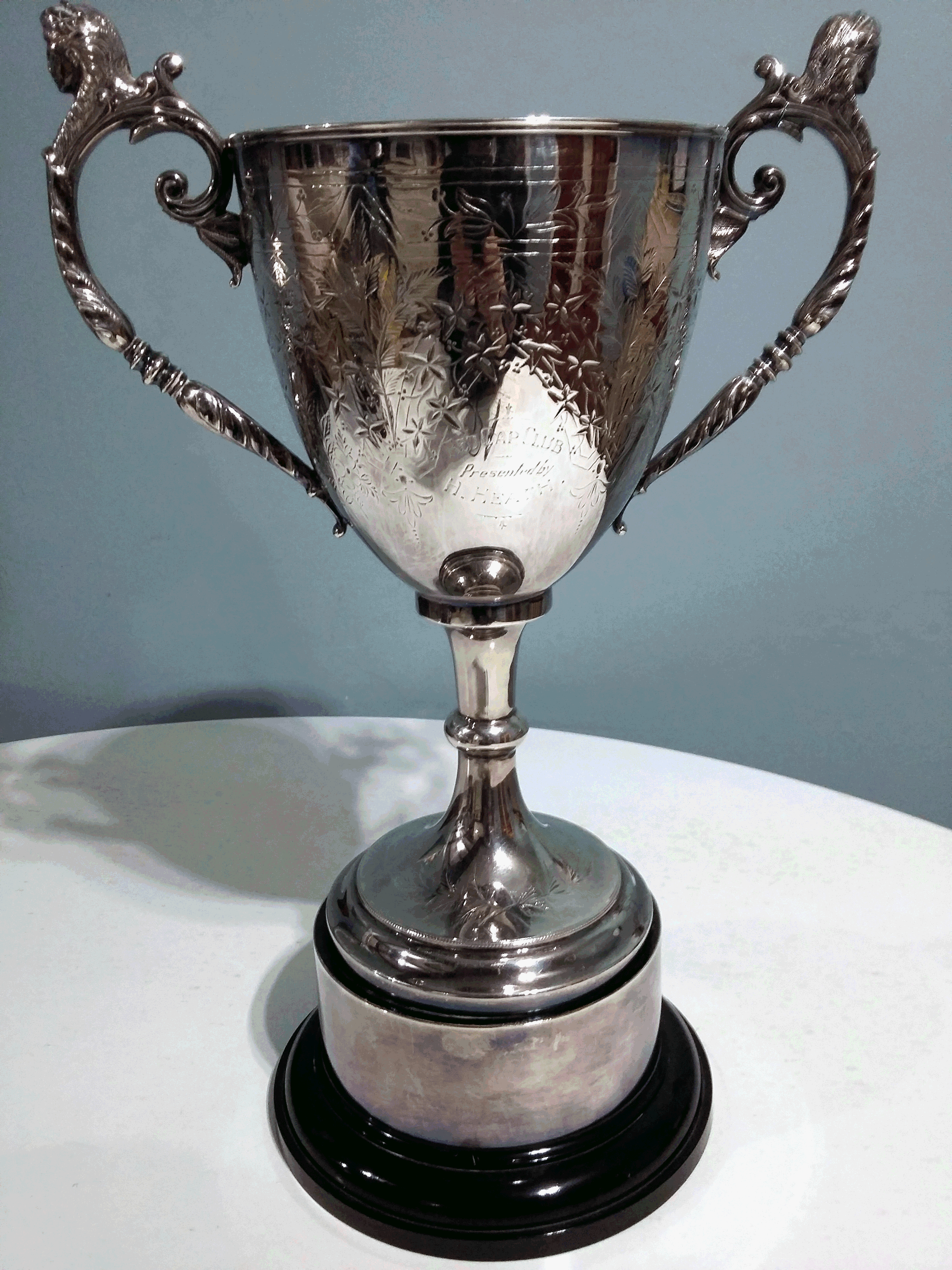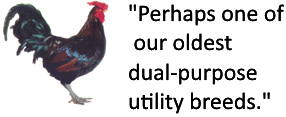The Derbyshire Redcap is perhaps one of our oldest dual-purpose utility breeds
Historically it was especially popular with farmers in Derbyshire and Yorkshire, where it was highly thought of, especially for its laying quality. Always recognised as a barnyard fowl, Derbyshire Redcaps are classed as a light breed and are at their best on free range where they can forage for most of their food. Never bred intensively or commercially, the hens are generally non-sitters producing large numbers of good-sized white eggs. The hen can produce 150 - 200 white eggs a year, and the meat is white and has a flavour similar to game birds.
THE DERBYSHIRE REDCAP LARGE FOWL
The Redcap is one of our finest breeds. It is pure bred like the Brahma and the Hamburg, being completely unmixed, not having been crossed for generations, it is a non-sitter and a layer.
This grand breed was by far the best laying breed in the country for many years, and was deservingly popular among farmers. It was swept from its place during the onrush of the breeds from the Mediterranean countries - Minorcas, Leghorns and Andalusians - and through the search following for the perfect dual-purpose fowl - Orpingtons, Plymouth Rocks and Rhode Island Reds. The Redcap could have withstood the flood of Mediterranean immigrants, but the reason for it being swept so completely from its place was its own excellence as a breeding fowl for first crosses. It is the perfect fowl for first cross breeding, and was used too extensively for this purpose, consequently, the numbers of good pure Redcap stock were too few for the breed to hold a worthy position before the onrush of the incoming breeds.
The Redcap is one of the most beautiful of all breeds of poultry. It is healthy, hardy and thrives in all parts of the British Isles. It has long been a favourite with poultry breeders in the exposed Derbyshire High Peak district.
The breed is not without value for the table, as year-old birds have a very good breast.
The Redcap is generally a non-sitter and an excellent layer. Every discerning poultry keeper should have a trio of Redcaps. Some writers have described the breed as good layers, but others have listed it as one of the five excellent varieties, namely; Ancona, Leghorn, Redcap, Rhode Island Red and Wyandotte. The fowl is worthy of this high place, and it is the intention of the Derbyshire Redcap Poultry Club to bring the Redcap to the state of utility and popularity to which the breed is entitled.
It is a grand old English breed, a utility layer of the first class and on the show bench a bird of beauty in shape and feather.
Average weight of large fowl eggs: 2 - 2½ozs. (56.6 – 70.8grams)
THE DERBYSHIRE REDCAP BANTAM FOWL
There is no doubt that the Redcap Bantam will become increasingly popular. The beautiful rose comb and the exquisite red and black feathering of the large fowl is reproduced in the miniature, providing a charming little bird that is bound to win its way into the pens of bantam fanciers.
Like the large fowl, it is a good layer, and it thus particularly suited to the small domestic poultry keepers who, while not having much space, can keep a pen of bantams, receive a plentiful supply of eggs, and indulge in his fancy by entering one of these lovely little birds at the local show.
Breeders are recommended to breed down from the large fowl and not to introduce foreign bantam blood, which can scarcely ever be bred out. Bantams can only be recognised as Redcaps if true in colour and type.
Average weight of bantam fowl eggs; 1½ - 1¾ozs.(42.5 - 49.5grams)
|
|
NOTES ON PREPARING BIRDS FOR SHOWS
by
Audrey Dawson
First catch your bird! You will have been looking for weeks, choosing your best birds. Keep referring to the standard to check the finer points.
Materials required:
Two buckets of warm water
Shampoo (baby no tears)
Oil (baby)
Soft brush to clean comb
Stronger brush to clean legs and feet
Soft paint brush
Hair dryer
Waterproof apron
Cage approximately one metre square
Brandy for recovery after your ordeal
It is easier with two people, one to hold the bird, one to wash. Catch your bird or birds about a week before the Show, it is easiest in the dark to pick them off the perch. Check you have the right bird with a torch, put them into a cage approximately one metre square to get them used to the confined space. Two days or one day before the show prepare to wash your birds. Put some shampoo into one bucket of warm water, wash and brush comb, wattles and beak – careful! Rinse with water from the second bucket. Scrub legs and feet then rinse. If any feathers or the tail is dirty give them a wash, and then rinse and dry with hair dryer. Brush baby oil (with soft paint brush) onto comb, wattles, beak, legs and feet.
Your birds should be looking absolutely splendid now, visions of cups and rosettes. If the show is next day box your bird now or put back into a very clean cage. Job done, go back into the house and have a brandy.
Footnote: Article written by the late Audrey (former club President) in 2006
CLUB TROPHIES (more info to be added)
The club trophies are awarded each year to club members as a result of their entries into the Derbyshire Redcap classes at the shows as detailed in the results section of the NEWS & EVENTS page.
The trophies are:
S & E Johnson (East) Cup - presented to the club by the original Johnsons animal feedstuffs merchants of Darley Dale - awarded for entries at the club show at Bakewell
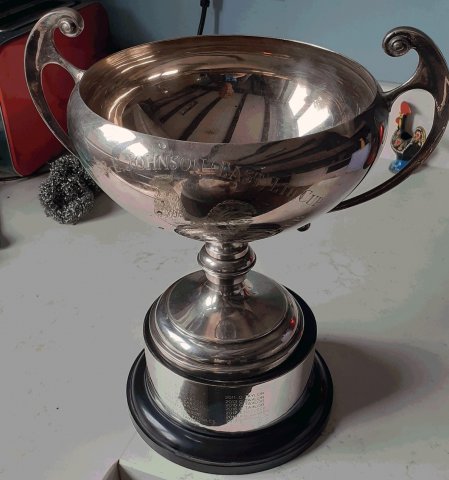
Peak Agricultural Cup - awarded for entries at the club show at Bakewell
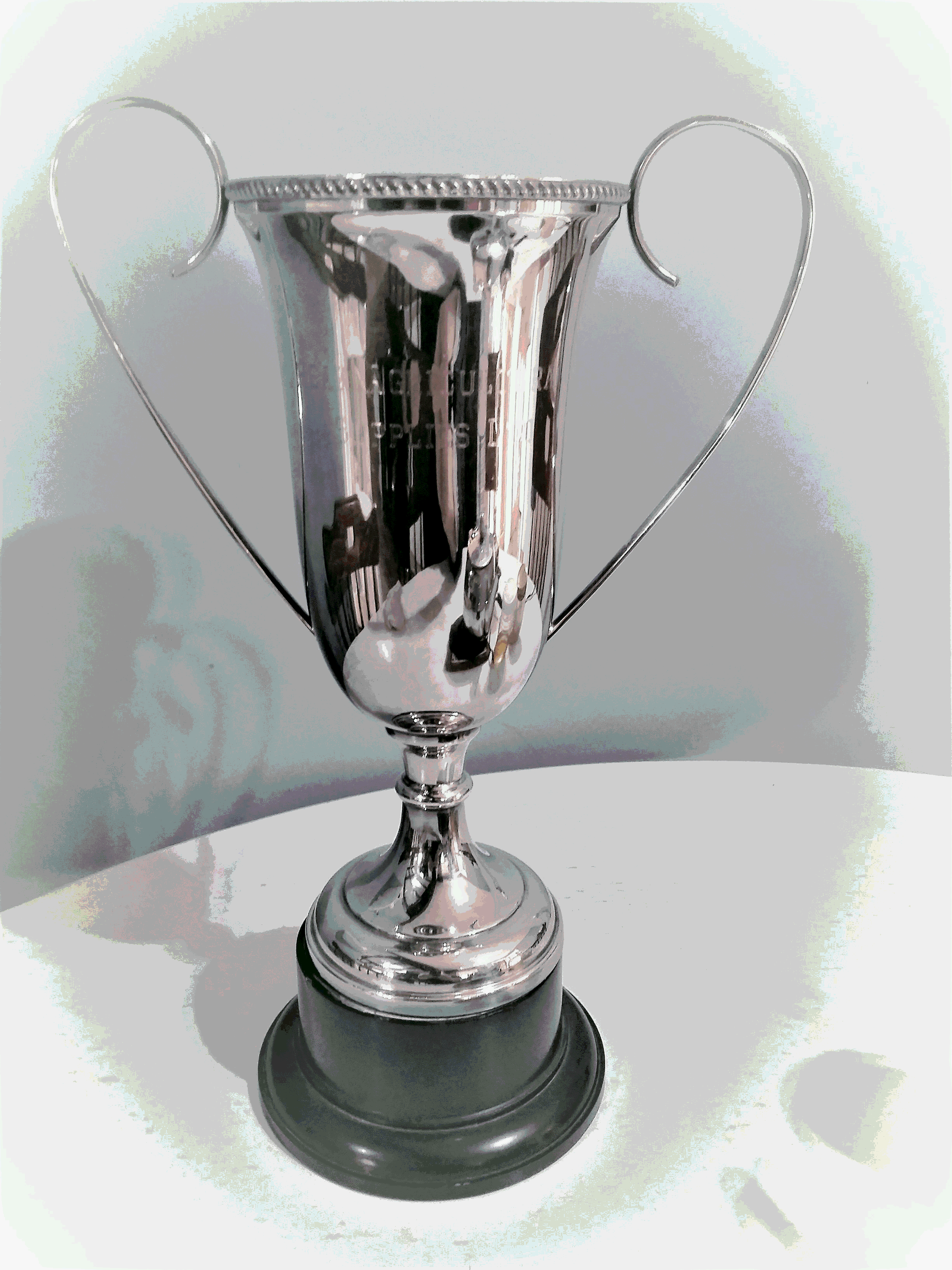
Brassington Bantam Cup - presented to the club by the late Syd Brassington - awarded for entries at the club show at Bakewell
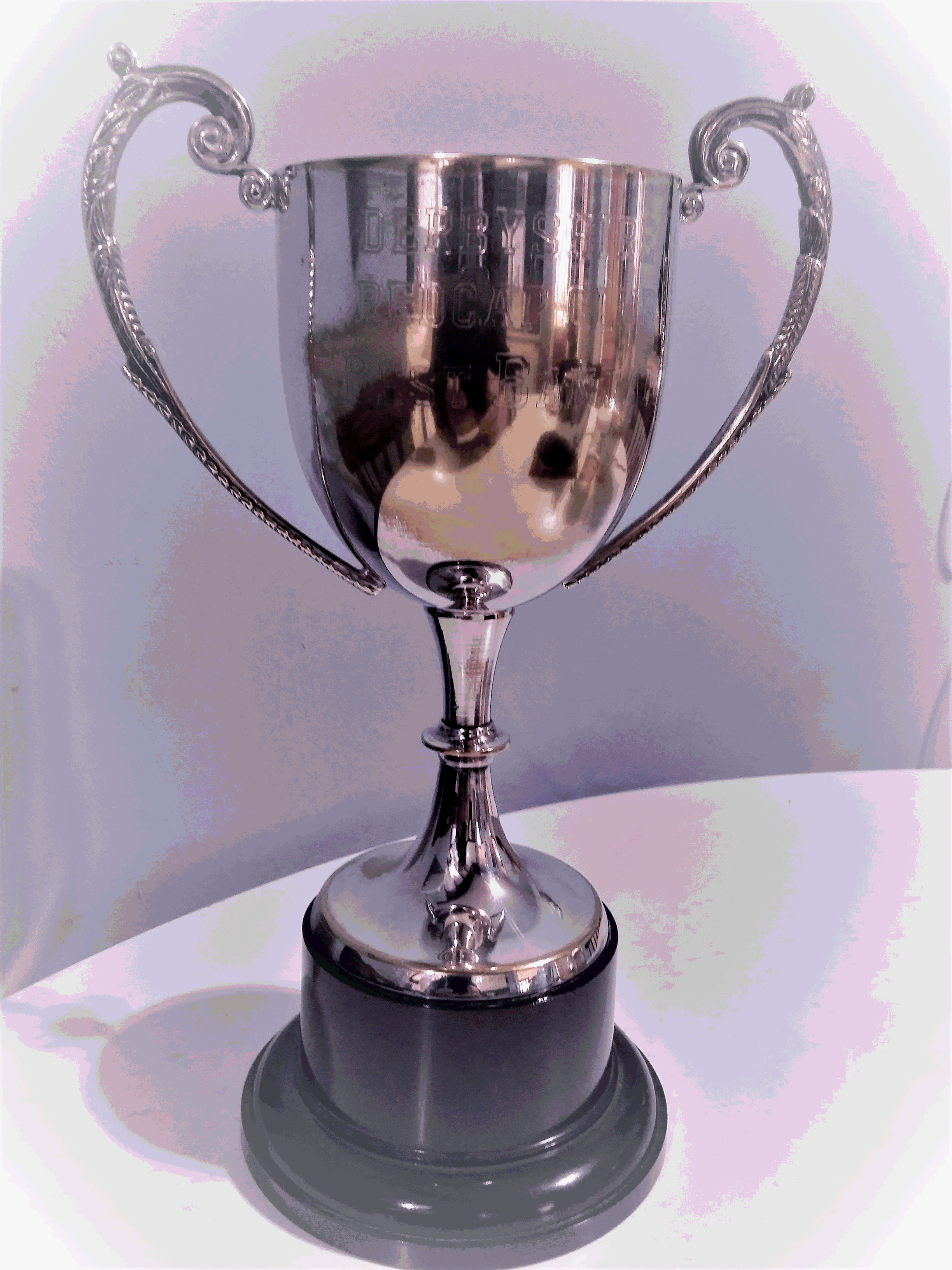
Audrey Dawson Rosebowl - presented to the club by the late Audrey Dawson - awarded for entries at the club show at Bakewell
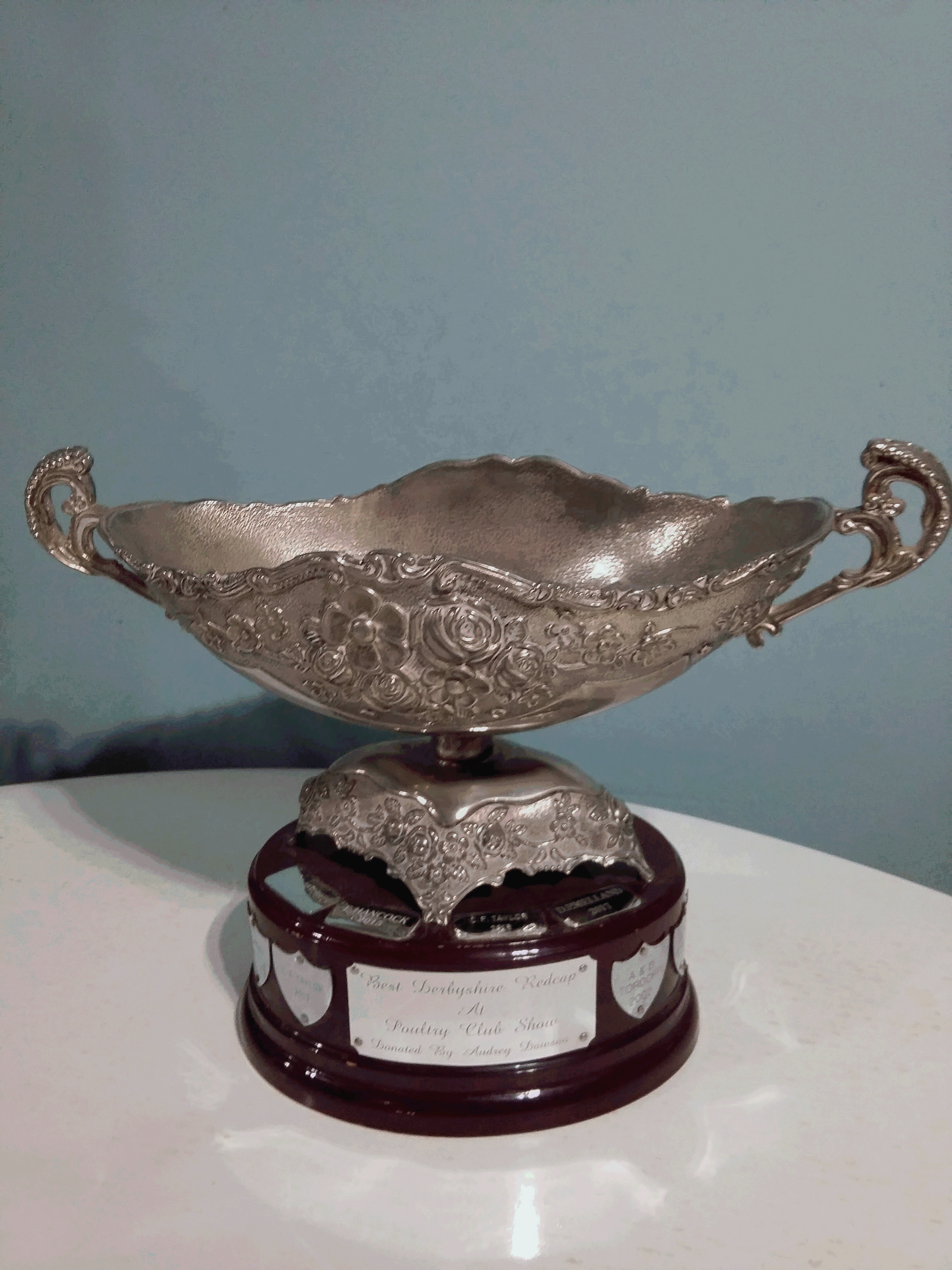
Heath Cup - awarded for entries at the Derbyshire County Show
